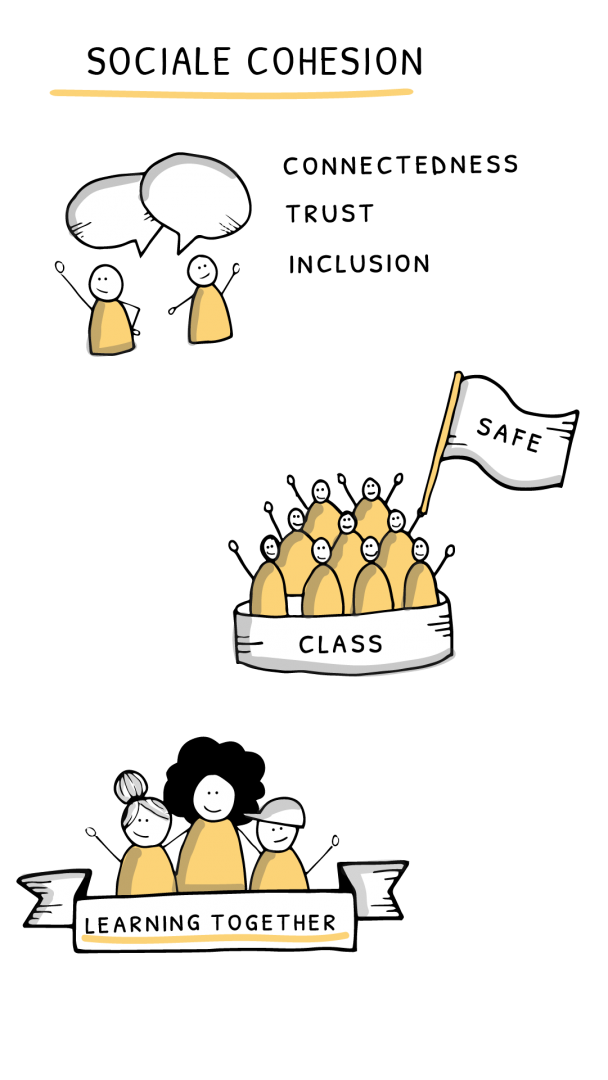Social Cohesion
Deep learning and understanding are only possible when students feel safe, when they feel mentally relaxed and are therefore in a receptive state. Deep learning is not possible when students feel they do not belong or when they feel unsafe. Social cohesion and openness in the classroom lay the groundwork for learning.
Why?
People are social animals. Belonging to groups has increased our survival and success rates. Social cohesion through our emotional proximity to and trust in other people gives us a sense of connectedness and security. The opposite scenario, one of social exclusion, is characterised by mistrust, fear and anxiety. There may even be bullying and an inherent feeling of not being safe and of not belonging.
What?
Learning is more than receiving cognitive knowledge about a theme. It is about being together with others, the lively exchange of opinions and brainstorming about and solving complex problems. Feeling a connection with the degree programme positively influences study success for students. This connectedness involves three types of interaction:
1. Student-student interaction
Learning from each other is a powerful way of bringing about deep learning. Explaining the material to others improves the understanding of it, and the connection between students enhances motivation. Students should see each other through a human prism by having real, honest conversations.
However, cooperation is not a given: students must learn to work together and to work in groups. Here are some things you can do to support this.
- Structure positive mutual dependence, so that one student’s success has a positive effect on the rest of the group.
- Emphasise individual responsibility: each student is responsible for:
- their own learning process; and
- helping other group members to succeed.
- Encourage social interaction beyond the course material, so students also get to know each other personally.
- Allow for positive vibes: give the students time to get used to the setting and to the other group members. Pay special attention to this in online sessions.
- Create opportunities for open and constructive feedback.
- Conflict will unavoidably occur in the course of group work. This is normal and makes it all the more important to create space and opportunities for students to discuss this openly.
2. Student-lecturer interaction
Positivity and connectedness between the lecturer and students strongly reinforces the learning process. Students learn little from people they do not like. A positive, personal student-lecturer relationship in which there is empathy and warmth, as well as non-directive teaching, leads to the best learning results (Cornelius-White, J.H.D., 2007).
Good lecturer-student relations lead to better results in critical and creative thinking and in verbal and mathematical skills.
Enabling critical, in-depth discussions and giving students the confidence to ask questions requires a classroom environment characterised by trust, curiosity and the willingness to be open and to show one’s vulnerability (‘I don’t understand this’). This safe atmosphere is brought about to an important extent by student-lecturer interactions.
3. Student-learning content
The concept of social cohesion probably does not make you think of course material or learning content. However, the learning environment and learning content cannot be viewed separately. Shared interest in a subject can already create a bond, and students discussing assignments and problems with each other can contribute to positive interaction among them.
Meaningful interaction with the learning material shows students the relevance of what they are learning. When the lecturer or fellow students make use of personal experience and practical examples, this can make the course material more ‘real’ for students.
How?
It is the small things that count. Dedicate some time in advance of each lecture to establishing contact with the students. How are they doing? Show them you care.
Create a safe atmosphere in your classroom, in which feedback, discussion and the exchange of ideas are important elements.

